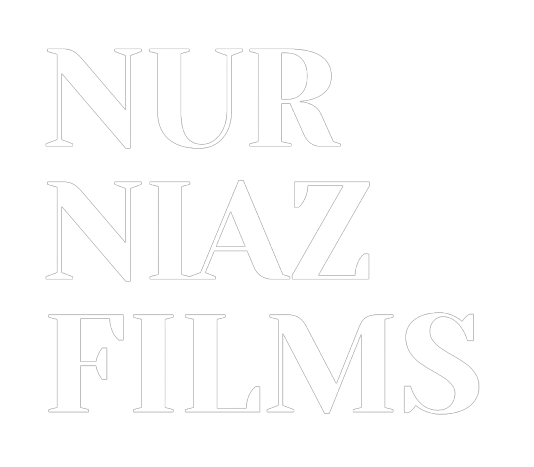Are you struggling with director's treatments? You're not alone. Many people find it challenging to create compelling treatments that effectively convey their ideas to agencies or clients. But fear not, because in this blog post, we'll dive deep into the world of director's treatments and provide you with valuable insights and tips to make your process easier. Plus, we'll introduce you to some amazing tools that can enhance your treatment-building experience.
What is a Director's Treatment?
A director's treatment is a crucial component of the pitching process. After an initial briefing with the agency to discuss the creative direction, you'll have the opportunity to present your vision for bringing the idea to life on the screen. Whether it's a film, commercial, or online content, the director's treatment serves as a visual document that showcases your stylistic approach within the budget constraints.
The primary goal of a treatment is to effectively communicate your approach to the agency or client so that they can select the best candidate for the job. It's your chance to demonstrate what the finished film could look and feel like before any major decisions are made.
The Structure of a Director's Treatment
One of the most important things to understand about treatments is that there's no defined structure. Each treatment is a reflection of its writer, and every job requires a unique approach tailored to the specific reader. However, there are certain key elements you should consider including:
- The Approach
Start by explaining how you plan to approach the project and why you are the best fit for the job. Highlight your relevant experience and what sets you apart from others. Convey confidence and enthusiasm to convince the agency or client that you're the perfect choice.
- The Idea
Discuss the concept of the video, even if it was given to you by the agency. Share your thoughts on what you like about the idea and how you would expand on it. If you have any suggestions for improvement or if you believe the idea is already excellent as it is, express it in your treatment.
- Visuals
Describe how the video will look, as this will help both the agency and the production team understand your creative vision. Use specific examples to illustrate your ideas. For instance, if you're pitching for a juice commercial featuring a family enjoying a picnic, explain the cinematography, lighting, and location choices that will bring the story to life. Be clear and concise in communicating these details to the reader.
- Wardrobe
If wardrobe plays a significant role in the story, discuss the clothing choices for the characters. Explain how these details contribute to the overall narrative and provide quality reference images to support your ideas.
- Post-Production
If relevant, describe your plans for editing, color grading, and any potential CGI or VFX elements. Explain how these aspects will enhance the viewer's experience and contribute to the overall impact of the video.
Tools to Enhance Your Director's Treatments
Creating visually appealing and professional treatments is essential to make a lasting impression. Here are a couple of tools that can help you elevate your treatment-building process:
Frameset
When it comes to finding high-quality images to complement your treatment, Frameset is a powerful AI-powered platform worth exploring. With its extensive search filters, you can discover specific images that match the mood and style you envision for your project. Whether you need visuals for a juice commercial or any other genre, Frameset allows you to set exact color parameters and find matching images from commercials, music videos, and films. As a subscriber, you can enjoy unlimited searches in 4K. Use the code "nurniazfilms" at checkout for a 10% discount on their pro membership.
Store
If you're looking for comprehensive guidance and ready-made templates to streamline your treatment-writing process, consider checking out my AD Store. I offer a range of easy-to-use treatment templates tailored to different genres. Whether you're writing for a car commercial, an app startup, or a fashion brand, these templates will save you valuable time in designing, layout, and structure.
For a deeper understanding of writing winning treatments, I also offer a 50-page e-book that covers all the intricacies of treatment writing in the professional world of commercial directing. The bundle includes a printable checklist and an example treatment to showcase my approach. Many professionals have found this resource invaluable for getting started in the world of treatments.
Choosing the Right Software
The software you use to build your treatments is a matter of personal preference. Whether you opt for Google Slides, PowerPoint, Canva, or Keynote, the key is to become familiar and comfortable with the software. All of these tools function similarly, and as long as you can create clean and understandable treatments, any of them will suffice.
The Length of Your Treatment
When it comes to treatments, there's no exact word count or page limit. Instead, I believe it's important to focus on effectively communicating your ideas. Treatments can vary in length, from short and concise ones of 10-15 pages to more in-depth treatments exceeding 50 pages. It ultimately depends on the project and your preferred approach. Personally, I once pitched a comprehensive treatment of almost 100 pages for Dubai Tourism, but I find that a sweet spot for many professionals lies between 25 and 30 pages. This length ensures you cover all the important aspects without overwhelming the reader.
The help with Pitching
In the world of pitching, there are companies that offer visual research, design, and writing services for directors. These services can be particularly helpful when you're pitching for high-budget campaigns with tight deadlines. Although they come at a cost ranging from 500 USD to 2000 USD per treatment, they provide a collaborative approach to treatment-building. However, many directors still prefer to maintain full control over the look and feel of their treatments. It's important to consider your preferences and budget before exploring these services.
Conclusion
Writing director's treatments is a process that requires practice and continuous learning. By studying other people's treatments, asking for feedback, and honing your own style, you'll gradually improve your own pitching game.








